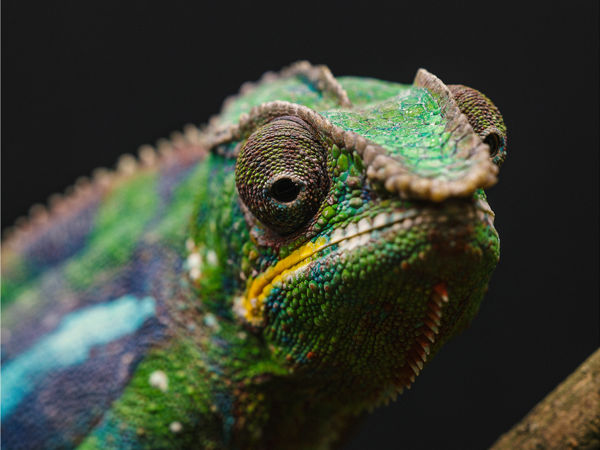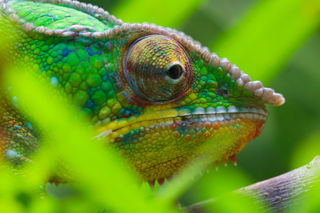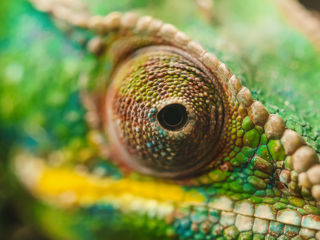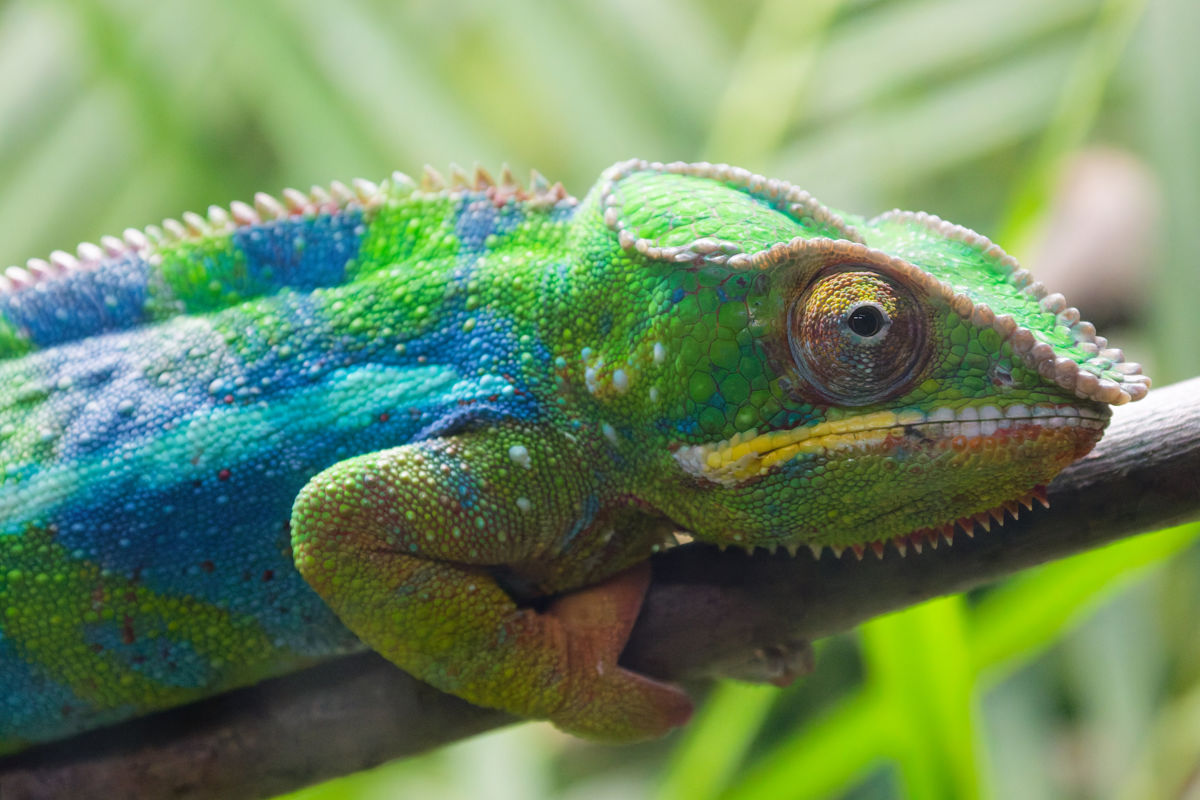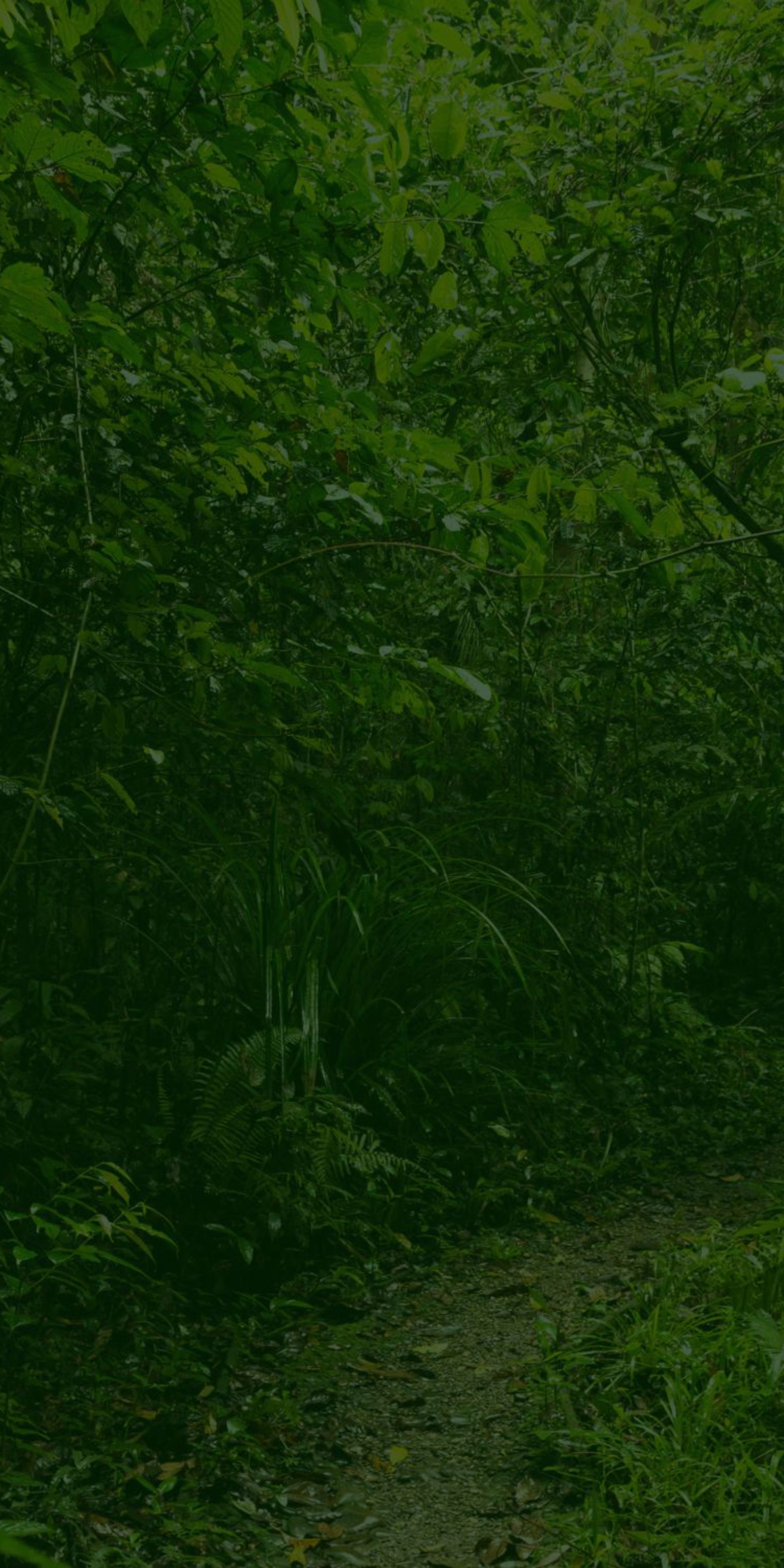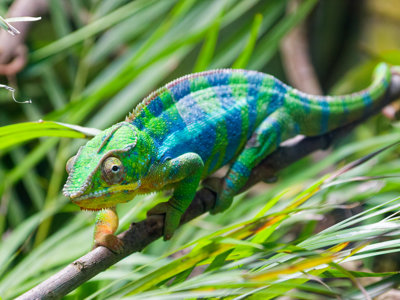
Panther chameleon
Conservation Status: Least concern
Distribution: Northeast and eastern Madagascar with introduced populations in Réunion and Mauritius
Habitat: Tropical forests and shrubland.
Diet: Insectivore (eating only insects)
Average size: Females – 12-15 inches (including tail). Males – 16-22 inches (including tail)
Lifespan: 2-7 years
Panther chameleons were originally only residents of Madagascar and have since been introduced to surrounding islands such as Réunion and Mauritius. These vivid and visually distinctive reptiles are habitat generalists, meaning they can live in a wide variety of habitats like humid forests, coastal forests and shrublands.
Panther chameleons’ skin cells respond to surrounding factors, altering the arrangement and shape of the nanocrystals (tiny crystals) that change the way light reflects from their skin. This makes them appear to change colour, helping them to camouflage with their surroundings when feeling threatened, to make themselves appear more brightly coloured to attract and defend their mates and to regulate their temperature. Males generally present a more vivid display of colourations than females who often remain a salmon pink colour.
Chameleons have a unique way of viewing the world, and panther chameleons are no exception. With eyes that move and focus independently from one another, their vision is stereoscopic (3D in perception) providing an almost completely full 342 degree view of their surroundings leaving only a small blind spot directly behind them.
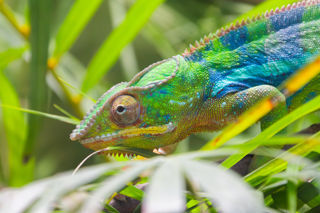
Female panther chameleons will come down from their arboreal (tree-based) habitats to the ground where they will dig down into a suitable patch of soil. Here, they lay and rebury their eggs, concealing their location from potential predators. These conditions are replicated in conservation zoos to ensure their ex-situ breeding success.
Chameleons have a prehensile tail (capable of gripping) and clawed opposable toes (that can reach towards each other to grab surrounding objects). These adaptations are physical features that help chameleons to climb and grasp the foliage within their habitats, allowing them to survive.
As a matter of survival, these poised predators have a tongue that recoils with tension (a bit like a bow and arrow) and dart outwards from their mouth at rapid speed to catch their unsuspecting prey with precise accuracy
Panther chameleons are a Least Concern species according to the IUCN Red List, meaning they are at low risk of extinction at present. However, they face some threats in the wild such as:
-
The international pet trade: Panther chameleons are one of the most popular species of Madagascan chameleon demanded in the international pet trade, and this could pose a threat to this species in the future
-
![362277039 664600909026309 8369226469419348221 N]()
What are we doing?
Our designated Conservation Education team are on hand to discuss the amazing features of panther chameleons with our guests whilst raising awareness for the potential threats posed by the international pet trade -
![Panther Chameleon 2 (1)]()
How you can help...
When buying animals to care for, ensure you’re not supporting the purchase of illegally sourced animals by thoroughly researching the species before you buy them. Animals should only be acquired from a reputable seller who can demonstrate the correct documentation to their buyers. This will help to conserve panther chameleons and maintain their stable in-situ (wild) population numbers.
